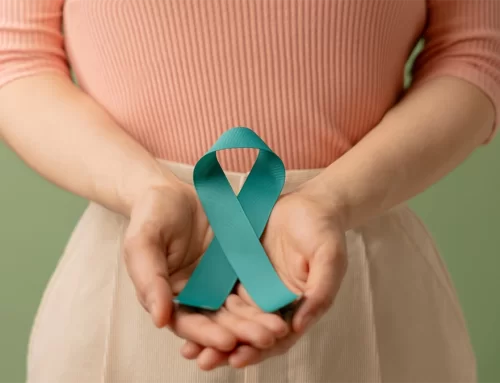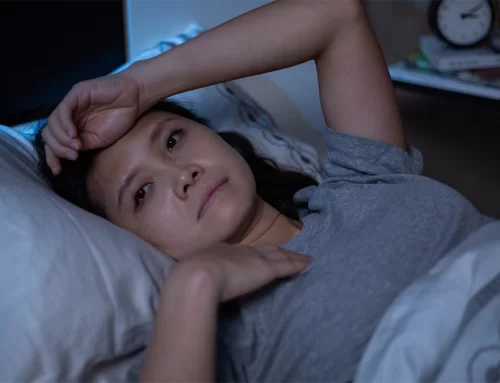If you’ve ever asked yourself, “Do I have PTSD?” you’re not alone. Many people feel confused or overwhelmed after living through something traumatic. It’s normal to wonder if what you’re feeling is a sign of something deeper. PTSD (Post-Traumatic Stress Disorder) can affect anyone, and it often shows up in ways that are hard to explain.
So, what exactly is PTSD, and how do you know if you have it? Let’s find out.
What Is Post-Traumatic Stress Disorder (PTSD)?
PTSD is a mental health condition that happens after someone goes through a frightening, dangerous, or upsetting event. These events could be accidents, violence, war, or natural disasters.
Right now, about 12 million people in the U.S. have PTSD, according to the National Center for PTSD in the U.S. Department of Veterans Affairs (VA). It can make people feel very stressed, afraid, or depressed, even long after the event is over.
The good news is that there are treatments that help people with PTSD feel better. But unfortunately, most people with PTSD do not get the help they need. This means many suffer in silence without support.
Understanding PTSD is the first step to getting help and healing.
Common Symptoms of PTSD
There are four main types of PTSD symptoms. To be diagnosed, you need to have some symptoms from each type, but everyone experiences them in their own way.
1. Reliving the Event (Re-Experiencing Symptoms)
You might feel like the event is happening all over again, even when you’re safe. This can be very scary and sudden.
- You have nightmares about what happened.
- You get flashbacks, where you feel like you’re back in that moment.
- Certain sounds, smells, or sights can trigger memories. For example, fireworks might remind you of gunfire, or a crash on the news might remind you of your accident.
2. Avoiding Traumatic Reminders and Triggers
You may try to stay away from anything that reminds you of the event. This includes people, places, or even your thoughts.
- You avoid crowds because they make you feel unsafe.
- You stop driving if you were in a bad crash.
- You avoid watching TV shows or movies that remind you of what happened.
- You stay very busy or refuse to talk about the event, so you don’t have to think about it.
3. Struggling With Negative Thoughts and Feelings
After the trauma, your thoughts and emotions might change. You might think differently about yourself and the world.
- You feel numb or empty. Things you used to enjoy no longer matter.
- You may forget parts of the traumatic event.
- You might believe the world is completely dangerous or that people can’t be trusted.
- You may feel guilt or shame, even if the trauma wasn’t your fault.
4. Feeling on Edge (Hyperarousal)
You may feel like you’re always on alert, ready for something bad to happen. This can make everyday life hard.
- You have trouble falling asleep or staying asleep.
- You can’t concentrate well.
- You jump easily at loud noises or surprises.
- You might act in risky ways, like driving too fast, using drugs, or drinking too much.
PTSD Symptoms in Children and Teens
Children can also have PTSD, but their symptoms may look different depending on their age.
Children under 6
- Get very upset if their parents aren’t nearby.
- Have trouble sleeping.
- Act out the trauma in play, like pretending the event is happening again.
Ages 7–11
- May draw, write, or talk about the trauma in stories or games.
- May have nightmares or become more angry or aggressive.
- Might try to stay away from school or have problems with friends.
Ages 12–18
- Often show symptoms like adults: depression, anxiety, or emotional withdrawal.
- Some may take risks, like using drugs or running away.
These are real symptoms, and help is available. Talking to a doctor, therapist, or counselor can be the first step toward healing.
How People May Mask or Hide PTSD Symptoms
Many people who have PTSD don’t want others to know. They might try to hide how they feel. This can happen for various reasons: fear, shame, or not wanting to look weak. Some people may not even know they have PTSD. They just know they don’t feel right.
Here are some common ways people might hide their PTSD:
1. Staying Busy All the Time
You might throw yourself into work, hobbies, or chores to avoid thinking about what happened. This is a way to distract yourself from your pain.
2. Isolating From People and Places
You might avoid crowds, loud events, or places that remind you of the trauma. But you might tell others you’re just “tired” or “not in the mood.”
3. Acting Like Everything’s Fine
You may smile, laugh, and act like you’re okay even when you’re not. You don’t want anyone to worry about you, so you pretend to feel normal.
4. Using Alcohol or Drugs
Some people drink or use drugs to numb the pain. It might feel like it helps for a little while, but it can make things worse over time.
5. Getting Angry Easily
Instead of showing fear or sadness, you may lash out in anger. You might yell, argue, or get irritated quickly, even over small things.
6. Keeping Quiet About the Trauma
You might not want to talk about what happened. You may feel ashamed, guilty, or think no one will understand. This silence can make symptoms worse.
PTSD isn’t always easy to see. Sometimes, even close friends and family don’t know someone is suffering. That’s why awareness is so important.
Awareness Programs That Can Help
The U.S. Department of Veterans Affairs (VA) has a short PTSD self-screen. It’s only five questions and can help you figure out if your symptoms might be PTSD. It’s private and free.
Also, June 27 is National PTSD Awareness Day, and the whole month of June is PTSD Awareness Month. These times are set aside to help people learn the signs of PTSD and how to get help. The U.S. Senate created this day in 2010, and the VA and Department of Defense are both deeply involved in raising awareness (source).
If you’re hiding your pain, know that PTSD is common. According to data from the National Comorbidity Survey Replication (NCS-R), about 3.6% of U.S. adults had PTSD in the past year. Women were more likely to have PTSD than men, with 5.2% of women affected compared to 1.8% of men. Over a lifetime, around 6.8% of adults experience PTSD.1
Women and veterans are at higher risk. But the good news is, PTSD can be treated. Talking to someone, getting screened, and starting treatment can truly help.
Modern and Effective Treatments for PTSD
If you’re dealing with PTSD, there are several treatments available that have been proven to help. Here’s a breakdown of some of the most effective options:
1. Cognitive Behavioral Therapy (CBT)
CBT helps you understand and change how you think about and react to your trauma. One common method is Prolonged Exposure Therapy, where you gradually face memories and situations related to the trauma in a safe way. This approach has been shown to reduce PTSD symptoms.2
2. Eye Movement Desensitization and Reprocessing (EMDR)
EMDR involves recalling traumatic events while focusing on specific eye movements or sounds. This process helps your brain reprocess the trauma, making it less distressing. Studies have found EMDR to be as effective as CBT in treating PTSD.3
3. Narrative Exposure Therapy (NET)
NET involves creating a detailed account of your life, focusing on traumatic events, to help you make sense of them. This therapy is especially helpful for people who have experienced multiple traumas. Research supports its effectiveness in reducing PTSD symptoms.4
4. Medications
Certain medications can help manage PTSD symptoms:
- Selective Serotonin Reuptake Inhibitors (SSRIs) like fluoxetine, paroxetine, and venlafaxine have been shown to reduce symptoms such as anxiety and depression.
- Prazosin is often used to treat nightmares and sleep problems related to PTSD.5
5. Mindfulness-Based Therapies
Practices like Mindfulness-Based Stress Reduction (MBSR) teach you to focus on the present moment, helping reduce anxiety and improve emotional regulation. Studies have shown that MBSR can lead to significant improvements in PTSD symptoms.6
6. Other Supportive Therapies
Additional therapies can complement the treatments above:
- Animal-Assisted Therapy: Interacting with animals like dogs or horses can help reduce PTSD symptoms.
- Art and Music Therapy: Creative activities can provide a non-verbal outlet for processing trauma.
- Physical Exercise: Regular movement, including yoga, can improve mood and reduce stress.
- Support Groups: Sharing experiences with others who have PTSD can provide comfort and understanding.
It’s important to find the approach that works best for you. If you’re considering treatment, consult with a healthcare professional to discuss these options and determine the most suitable path for your recovery.
From therapy and medical support to holistic care and community, TasteRecovery creates safe spaces where actual healing can begin. Contact us today and take your first step toward feeling better. Help is real. Recovery is possible.
Sources:
-
National Institute of Mental Health. (2019). Post-Traumatic Stress Disorder (PTSD). https://www.nimh.nih.gov/health/statistics/post-traumatic-stress-disorder-ptsd
-
McLean, C. P., Levy, H. C., Miller, M. L., & Tolin, D. F. (2022). Exposure therapy for PTSD: A meta-analysis. Clinical Psychology Review, 91, 102115. https://doi.org/10.1016/j.cpr.2021.102115
-
Asimakopoulou, E., Theodosis-Nobelos, P., & Triantis, C. (2024). Advances in the management of PTSD after critical illness: A narrative review. Emergency and Critical Care Medicine, 4(4), 174–182. https://doi.org/10.1097/ec9.0000000000000139
-
Forman-Hoffman, V., Middleton, J. C., Feltner, C., et al. (2018). Psychological and pharmacological treatments for PTSD: A systematic review update. Agency for Healthcare Research and Quality. https://pubmed.ncbi.nlm.nih.gov/30204376/
-
Forman-Hoffman, V., Middleton, J. C., Feltner, C., et al. (2018, May). Evidence summary. Agency for Healthcare Research and Quality. https://www.ncbi.nlm.nih.gov/books/NBK525135/
-
Burback, L., Brémault-Phillips, S., Nijdam, M. J., et al. (2023). Treatment of PTSD: A state-of-the-art review. Current Neuropharmacology, 22(4). https://doi.org/10.2174/1570159×21666230428091433




